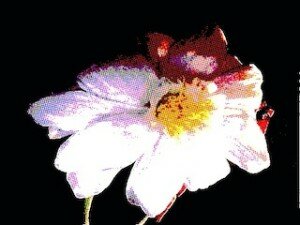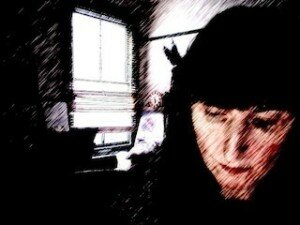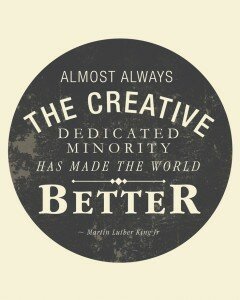Our meditation series continues…

Buddhism
Yoga and Buddhism are sister traditions which evolved in the same culture of ancient India. They use similar terms and follow similar principles and practices. Many people are apt to regard Yoga and Buddhism as more or less the same. The differences that have existed between the two systems historically are less obvious to us than their commonalities.
Buddhism is an entire spiritual tradition born from the benefits of meditation. The many forms of the tradition that exist today all grew from the teachings of Siddhartha Gautama, known as The Buddha after he attained enlightenment.
Having experienced extremes of worldliness (he was born to the elite) and asceticism (he renounced his background to endure fasting, extreme elements, and illness), he finally accepted that neither teachings, nor asceticism gave him the knowledge he sought. He then sat to mediate under a Bodhi tree where, after being tempted and attacked by demons, he finally attained enlightenment and came to understand the causes of suffering and how to eliminate them
Like yoga, Buddhism is more a way of living than a religion, offering an array of spiritual practices from moral precepts to a wide range of meditation methods. The understanding and practice of meditation is core. The practice of concentration comes first, involving focus on a single object, concept or process such as the breath, a physical sensation, the idea of compassion or any attribute of the Buddha. This prepares the mediator for vipassana (the path of insight) in which the mind is opened out of concentration.
Vipassana involves the moment-by-moment practice of mindfulness, directing attention to the present, to what is. This is a key concept in the linking of meditation and creative consciousness. Coming into the moment always creates a gap in the stream of thought and also in the stream of time. Nothing truly creative ever comes into this world except through that gap.
Yoga and Buddhism are both meditation traditions devised to help us realize the truth of consciousness. They both see the suffering and impermanence inherent in all birth, whether it is animal, human or god, and seek to alleviate it through developing a higher awareness. Both emphasize the need to dissolve the ego, the conceptual mind, the attachment to “me” and “mine” and enable a connection to a reality that is not limited by such separateness. Both traditions emphasize enlightenment or inner illumination to be realized through meditation. Both systems also recognize dharma, the principle of truths like karma and unity as basic laws of the universe that we must come to understand. And both also share ethical values like non-violence, truthfulness, non-attachment and non-stealing.
There are differences, however. Vedic systems are built upon fundamental principles like the Self (atman), the Creator (ishvara), and Godhead (brahman). Buddhism rejects all such as mere creations of the mind itself. Many scholars see Buddhism as a modification of vedanta, while others see it as a revolt against. Vedanta eventually absorbed Buddhism in India, which by the seventh century had ceased to be a major religion in the country. Vedantic teachers saw the Buddha as an incarnation (avatara) of Lord Vishnu, like Rama or Krishna, but rejected aspects of Buddhist philosophy, particularly its denial of a creator.
Zen
Zen is form of Buddhism with which we are most familiar in the West. Over the last century it has established a huge following, much as it did several centuries ago in China and Japan. The word “zen” has entered our language to describe a certain minimalist taste and aesthetic.
Today the two main schools of zen are soto and Rinzai, all of which place great emphasis on zazen (sitting meditation). The cornerstones of zazen are posture, breathing and attitude. While the beginner is often encouraged to focus on the breath, pure zazen involves simply sitting in a state of quiet awareness, doing nothing, without purpose or aim. Thoughts and images are allowed to come and go, floating through like clouds in the sky, observed but not owned. Zen is the original of the kind of meditation that scientists call Open Monitoring Meditation (OMM).
Zen has strict rules for meditation and suits those who find freedom in discipline. Its founder, Bodhidharma, is traditionally depicted as a fierce looking character with protruding eyes, scowling. Legend has it that he was so enraged after falling asleep during meditation that he sliced off his eyelids to about it happening again. The first tea plant then sprouted where his eyelids fell and ever since zen monks have taken copious cups of tea, to keep them alert during their long hours of meditation.
In keeping with this strictness, zen lays down very specific rules for meditation. The ideal posture is the lotus position, or if this is too difficult, the half-lotus. The trunk is held upright and the chin drawn in, the eyes kept slightly open, looking down about 1m ahead, holding a loose gaze. The hands rest in the lap, left above right, with the tips of the thumbs touching. Correct breathing -– deep, calm and even -– is said to follow naturally from correct posture and from these two flows the correct attitude of mind, which is the opening out of one’s attention to become conscious of whatever is happening internally and externally in the moment, the allowing of all to be without comment or interference.
Zen can only be truly appreciated through practical experience and training.
Next Week: Taoism
























